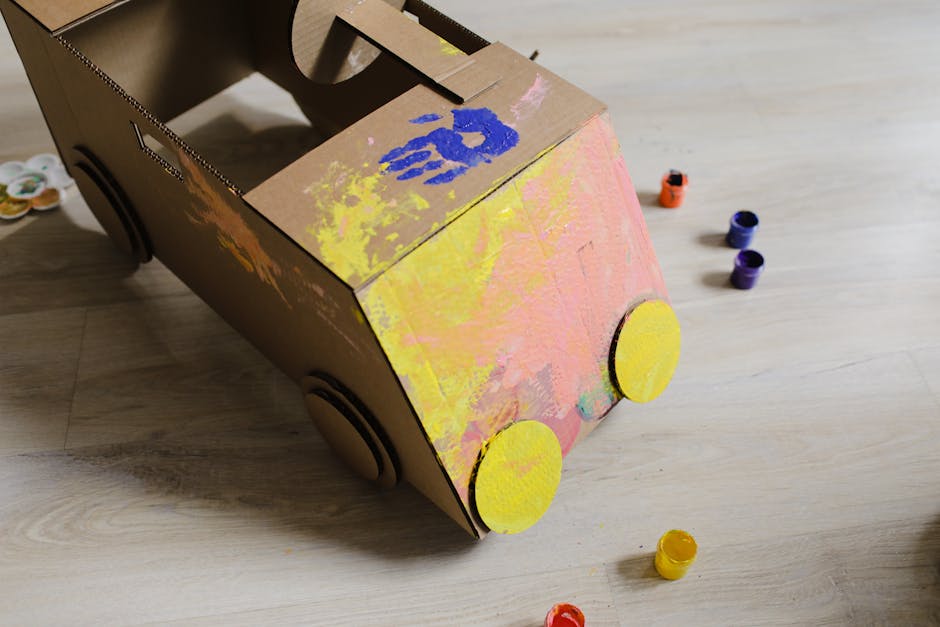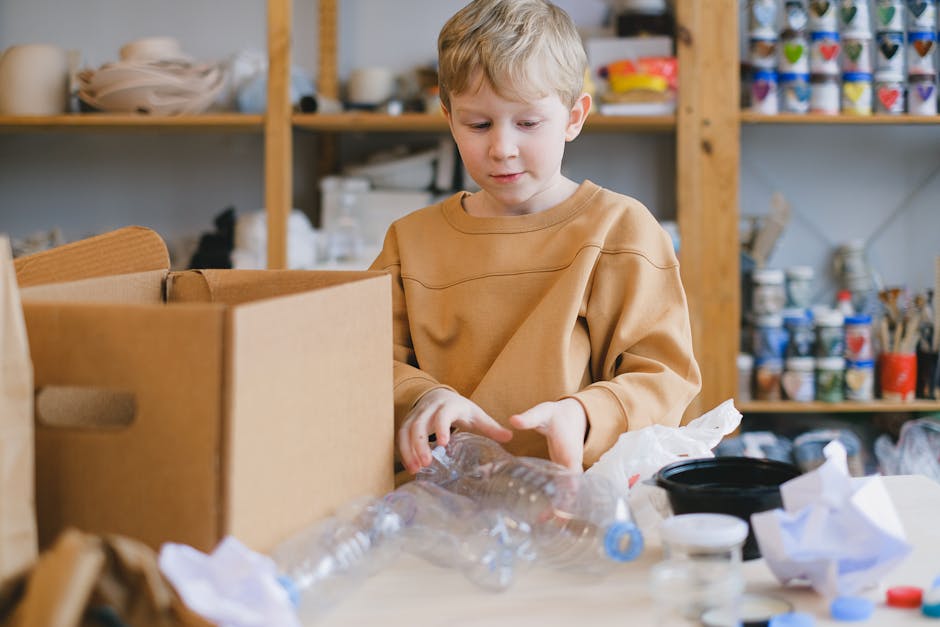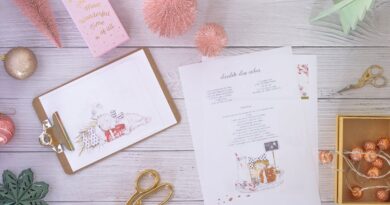Eco-Friendly DIY Toy Projects for Kids: A Sustainable and Creative Approach
As parents and caregivers, we are constantly searching for ways to engage our children in activities that are not only fun but also beneficial for their development. In today’s world, where environmental consciousness is more important than ever, finding eco-friendly alternatives to traditional toys can be a rewarding experience. Enter the world of Eco-Friendly DIY Toy Projects for Kids – a creative and sustainable way to spark your child’s imagination while instilling a sense of responsibility towards the planet.
From recycled materials to nature-inspired creations, the possibilities are endless when it comes to crafting eco-friendly toys for children. In this comprehensive guide, we will delve into the world of Eco-Friendly DIY Toy Projects for Kids, exploring the benefits, ideas, and tips to help you embark on this exciting journey. So, grab your crafting supplies and let’s get started!
The Benefits of Eco-Friendly DIY Toy Projects

When it comes to choosing toys for children, there are numerous benefits to opting for eco-friendly DIY projects over store-bought options. Here are some key advantages:
Promotes Creativity and Imagination
One of the most significant benefits of engaging in DIY toy projects with your child is the opportunity to foster their creativity and imagination. By creating toys from scratch using sustainable materials, children are encouraged to think outside the box and come up with unique designs that reflect their personality.
For example, using recycled cardboard to build a dollhouse allows children to customize the layout, dcor, and furniture, sparking their creativity and ingenuity. This hands-on approach to toy-making can lead to hours of imaginative play and storytelling, enhancing cognitive development and problem-solving skills.
Encourages Sustainability and Environmental Awareness
By engaging in eco-friendly DIY toy projects, children learn the value of repurposing materials and reducing waste. Instead of discarding items like cardboard boxes, plastic bottles, or old fabric, they can transform these everyday objects into new and exciting toys.
For instance, turning a cardboard box into a spaceship or a plastic bottle into a sensory bottle not only promotes sustainability but also teaches children about the importance of reusing and recycling. This hands-on experience with eco-friendly practices instills a sense of environmental awareness and responsibility from a young age.
Builds Fine Motor Skills and Hand-Eye Coordination
Creating DIY toys involves a variety of fine motor skills such as cutting, gluing, painting, and assembling. These activities help children develop their hand-eye coordination, dexterity, and spatial awareness while engaging in a fun and interactive way.
For example, threading beads to make a colorful bracelet or cutting out shapes to build a paper animal requires precision and concentration, strengthening fine motor skills in the process. As children refine these abilities through hands-on projects, they are better prepared for tasks like writing, drawing, and other fine motor activities.
DIY Toy Ideas for Eco-Friendly Playtime

Now that we’ve explored the benefits of eco-friendly DIY toy projects, let’s dive into some creative ideas to inspire your next crafting session with your child. From nature-inspired toys to upcycled treasures, there are endless possibilities to explore:
Nature-Inspired Sensory Bins
Sensory bins are a fantastic way to engage children in hands-on play while stimulating their senses and creativity. Create a nature-inspired sensory bin using items like dried leaves, pinecones, rocks, and feathers collected from your backyard or a local park.
Fill a shallow container with sensory materials and let your child explore the textures, colors, and shapes with their hands. Add scoops, containers, and small toys to enhance the sensory experience and encourage imaginative play. This DIY project not only provides hours of entertainment but also connects children to the natural world around them.
Upcycled Musical Instruments
Encourage your child’s love for music by creating upcycled musical instruments using everyday items found around the house. Turn empty cans into drum sets, rice-filled bottles into shakers, or rubber bands stretched over a shoebox into a guitar.
Invite your child to decorate their homemade instruments with paint, stickers, or recycled materials to make them uniquely their own. Encourage them to experiment with different sounds and rhythms, fostering a love for music and creativity. This DIY project is not only fun and engaging but also promotes sustainability by repurposing items that would otherwise end up in the landfill.
Recycled Cardboard Mazes
Transform a cardboard box into a thrilling maze for your child to navigate using marbles, balls, or small toys. Cut out paths, tunnels, and obstacles inside the box, creating a challenging maze that will test your child’s problem-solving skills and spatial awareness.
Add twists and turns, dead-ends, and secret passages to make the maze even more exciting. You can paint the cardboard maze with bright colors or add stickers and decorations to enhance the visual appeal. This DIY project provides hours of entertainment while stimulating cognitive abilities and fostering creative thinking.
Tips for Successful Eco-Friendly DIY Toy Projects

Embarking on eco-friendly DIY toy projects with your child can be a rewarding and enjoyable experience. Here are some tips to ensure a successful and engaging crafting session:
Choose Safe and Sustainable Materials
When selecting materials for your DIY toy projects, opt for safe and sustainable options that are non-toxic and environmentally friendly. Look for recycled or upcycled materials like cardboard, paper, fabric scraps, and natural elements such as wood, shells, or stones.
Ensure that any paints, glues, or other craft supplies you use are water-based, non-toxic, and safe for children. Avoid materials that may pose a choking hazard or contain harmful chemicals that can be harmful to your child’s health. By choosing eco-friendly materials, you can create toys that are not only safe but also kind to the planet.
Encourage Creativity and Exploration
Give your child the freedom to explore their creativity and imagination during DIY toy projects. Instead of following strict instructions or rules, allow them to experiment, make mistakes, and come up with their ideas.
Encourage open-ended play and creative problem-solving by asking questions, providing prompts, and offering suggestions without imposing limitations. Celebrate your child’s unique ideas and creations, no matter how unconventional they may seem. By fostering a sense of autonomy and creativity, you empower your child to think outside the box and express themselves through their creations.
Embrace Imperfection and Learning Opportunities
Remember that the goal of eco-friendly DIY toy projects is not perfection but rather the process of creating, exploring, and learning together. Embrace imperfections, mistakes, and unexpected outcomes as valuable learning opportunities for both you and your child.
Encourage a growth mindset by focusing on the journey of making rather than the end result. Help your child see mistakes as opportunities to learn, problem-solve, and adapt their approach. By modeling a positive attitude towards challenges and setbacks, you instill resilience, perseverance, and a love for the creative process in your child.
Engage in Meaningful Conversations
Use DIY toy projects as an opportunity to engage in meaningful conversations with your child about sustainability, the environment, and the importance of reducing waste. Discuss the impact of consumerism on the planet, the benefits of recycling and upcycling, and the role of creativity in finding eco-friendly solutions.
Encourage your child to ask questions, share their thoughts, and brainstorm ideas for future projects that promote sustainability and environmental awareness. By fostering open communication and critical thinking, you empower your child to become a thoughtful and responsible global citizen who values the planet and its resources.
Common Misconceptions about Eco-Friendly DIY Toy Projects

Despite the numerous benefits of eco-friendly DIY toy projects, there are some common misconceptions that may deter parents from exploring this creative and sustainable activity. Let’s debunk a few myths surrounding eco-friendly DIY toy projects:
Myth: Eco-Friendly DIY Toys are Low-Quality and Short-Lived
One of the most common misconceptions about eco-friendly DIY toys is that they are inferior in quality and durability compared to store-bought toys. However, with careful selection of materials and proper construction, DIY toys can be just as durable and long-lasting as their commercial counterparts.
By using sturdy materials like cardboard, wood, and fabric, and reinforcing weak points with glue or tape, you can create eco-friendly toys that withstand hours of playtime. Encourage your child to take care of their handmade toys and repair any damage that may occur, teaching them the value of craftsmanship and responsibility.
Myth: Eco-Friendly DIY Toy Projects are Time-Consuming and Complicated
Another misconception about eco-friendly DIY toy projects is that they require a significant amount of time, effort, and expertise to complete. While some projects may be more intricate or time-consuming than others, there are plenty of simple and straightforward ideas that can be completed in a short amount of time.
Look for DIY toy projects that match your child’s age, interests, and skill level, and start with small, manageable tasks to build confidence and enthusiasm. Keep the focus on the process of creating rather than the end result, and enjoy the journey of crafting together with your child. By making DIY toy projects a fun and relaxing activity, you can dispel the myth that they are overly complicated or time-consuming.
Conclusion: Inspiring Sustainable Play with Eco-Friendly DIY Toy Projects
To wrap things up, Eco-Friendly DIY Toy Projects for Kids offer a unique and enriching opportunity to engage children in sustainable play while nurturing their creativity, imagination, and environmental awareness. By choosing eco-friendly materials, encouraging creativity and exploration, embracing imperfection, and engaging in meaningful conversations, you can create memorable experiences that foster a love for crafting and a sense of responsibility towards the planet.
Whether you’re creating nature-inspired sensory bins, upcycled musical instruments, or recycled cardboard mazes, the possibilities for eco-friendly DIY toy projects are endless. By following the tips and debunking common misconceptions, you can embark on a fulfilling journey of creativity, learning, and play with your child.
So, gather your crafting supplies, unleash your creativity, and let the magic of Eco-Friendly DIY Toy Projects for Kids inspire sustainable playtime and cherished memories with your little ones.




